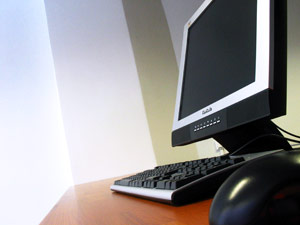Best Practices
- Buy smart.
- Purchase energy-efficient equipment. Look for EPEAT and ENERGY STAR ratings for the most efficient equipment.
- Laptops or tablets are more energy efficient than desktops.
- Turn off your computer, monitor and other devices when not in use.
- Screen savers do NOT save energy.
- Saves more energy than sleep mode.
U-M Best Practice
- Ask your IT or facilities staff for a power-strip for speakers, scanners, chargers and other devices; recommend "smart" power strips that have combination outlets (manually switched and always-on), motion sensors and other advanced features.
- Plug gadgets into power strips and turn them off when not in use.
- Choose "smart" power strips that have combination outlets (manually switched and always-on), motion sensors and other advanced features.
- Use sleep settings when your computer is on.
- Screen savers do NOT save energy.
- Learn how to use power management settings.
- Save resources.
- Reconsider printing.
- Keep printer off—only turn it on when needed.
- Reduce paper usage.
- Print only final copies.
- Print double-sided and/or two-up.
- Avoid printing unnecessary emails.
U-M Best Practice
- Work with your IT staff to consolidate printers.
- Reuse and responsibly recycle old computers and devices.
- Sell it
- Donate it; try The Freecycle Network.
- Recycle it; visit the Michigan Department of Environmental Quality to find out where/how to recycle electronic waste.
U-M Best Practice
- Give older, but working, computers to other U-M departments.
- Send truly obsolete University-purchased gear to Property Disposition to be disposed of properly. Talk with your IT staff first.
- Find out the energy-saving practices in your unit.
- Ask for recommendations on how to proceed.

Did You Know?
The United States would save $4 billion worth of electricity if all office computers were set to sleep mode when not in use.
